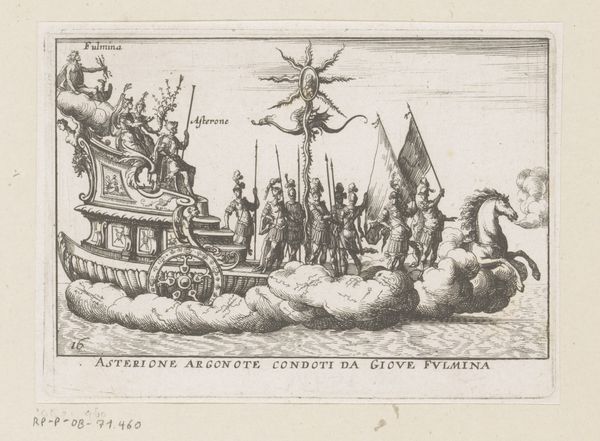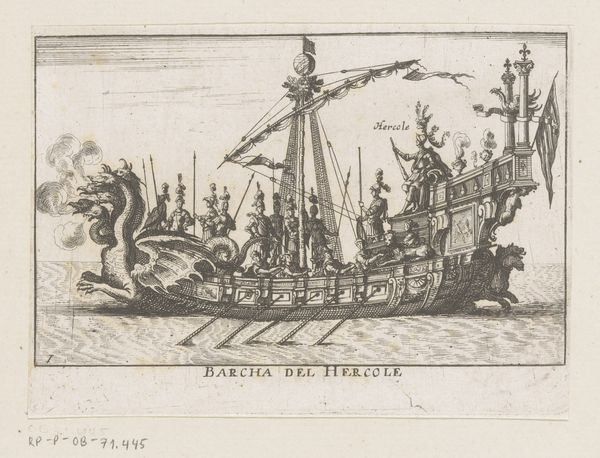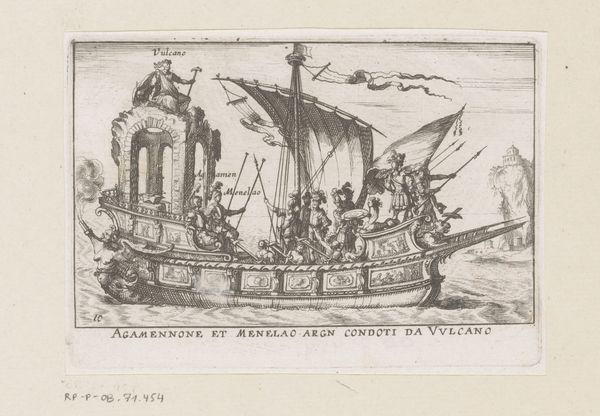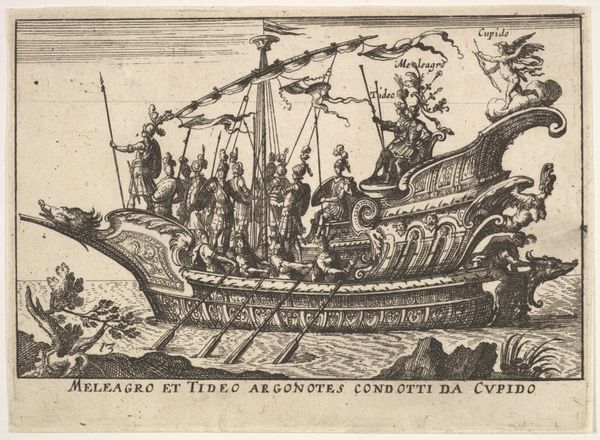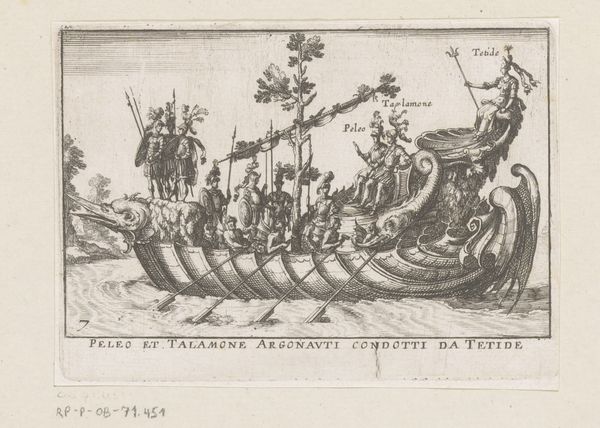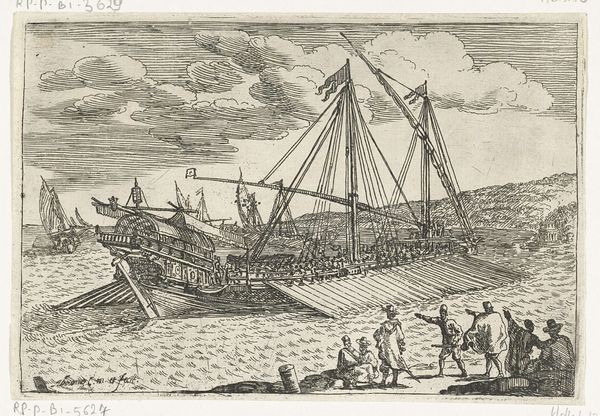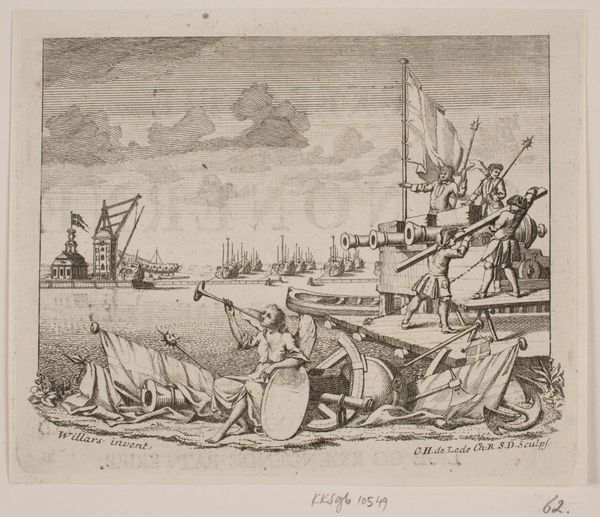
Plate 11: Idmon and Mopsus guided by Apollo (Idmone ea Mopso Argonoti guidati da Apollo), with an aureole around Apollo's head, from the series 'The magnificent pageant on the river Arno in Florence for the marriage of the Grand Duke' (Le Magnifique carousel fait sur le fleuve de l'Arne a Florence, pour le mariage du Grand Duc), for the wedding celebration of Cosimo de' Medici in Florence, 1608 1664
0:00
0:00
drawing, print, etching, engraving
#
drawing
#
allegory
#
baroque
# print
#
etching
#
landscape
#
history-painting
#
engraving
Dimensions: Sheet (Trimmed): 3 5/8 × 5 1/16 in. (9.2 × 12.9 cm)
Copyright: Public Domain
This is an engraving made in 1608 by an anonymous artist, part of a series called ‘The Magnificent Pageant on the River Arno in Florence,’ which commemorates Cosimo de’ Medici’s wedding. This print, ‘Idmon and Mopsus guided by Apollo,’ depicts a ship elaborately decorated with figures from classical mythology, navigating the Arno. Apollo, wreathed in light, guides the ship carrying Idmon and Mopsus, figures associated with prophecy and wisdom. But what does it mean to stage the wedding of Cosimo de’ Medici through classical allegory? These lavish displays reinforced the Medici family's power, connecting them to the grandeur and legitimacy of ancient rulers. The choice to represent the figures on the ship as white, classical heroes also reinforces the racial hierarchies of the time. Consider how such spectacles served to exclude and marginalize the experiences and identities of those not part of the ruling class. While the image celebrates a wedding, it simultaneously reflects the power dynamics and social stratification of 17th-century Florence. It’s an important reminder of how art, even in moments of celebration, can embody complex social narratives.
Comments
No comments
Be the first to comment and join the conversation on the ultimate creative platform.
